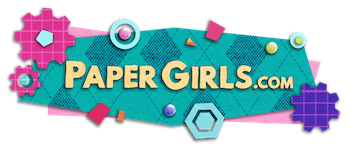Unit: Matter
Lesson 1: Disappearing Candy Canes Experiment #1
Dissolving candy canes in hot water, cold water, and vinegar.
Standard: NGSS 5-PS1-1. Develop a model to describe that matter is made of particles too small to be seen.
Part 1
Part 2
Discussion Questions
Think: What did you learn about molecules from this video? If you knew about molecules already, how did this experiment add to what you know?
Reflect: What was your guess before the 2nd part of the video? Was it correct? What led you to pick the liquid that you chose?
Apply: Use a piece of paper and draw a picture to represent what was happening with the water molecules when they dissolved the candy cane.
Expand: What other items around your house could you try this experiment with?
Lesson 2: Disappearing Candy Canes Experiment #2
Dissolving candy canes in Sprite, hot water, and vinegar.
Standard: NGSS 5-PS1-1. Develop a model to describe that matter is made of particles too small to be seen.
Part 1
Part 2
Discussion Questions
Think: What sounds gave her clues to think that sprite was breaking the candy cane down right away?
Observe: Look at all of the candy canes on the paper towel. What do you observe about each candy cane? Did they all start dissolving in the same way?
Explain: Why did the hot water still break down the candy cane faster?
Apply: Why would McDonalds’ want to change their formula to add extra sugar?
Lesson 3: Dissolving Lollipops Experiment
Dissolving lollipops in Mt. Dew, lemon juice, and hot water.
Standard: NGSS 5-PS1-1. Develop a model to describe that matter is made of particles too small to be seen.
Part 1
Part 2
Discussion Questions
Guess: Based on the Sprite video, what did you think was going to dissolve the quickest?
Learn: What happens during Inversion? Why would lemon juice be used in cooking?
Apply: Do you think hot water is always going to be the one to break down sugar the fastest? Do you think another liquid would win? Why or why not?
Expand: Think about other times you have put something in hot water. What usually happens?
Lesson 4: How to Mix Oil and Water
Mixing oil, water, and soap.
Unit: Matter: Molecules. 5-PS1-4 Matter and Its Interactions. Conduct an investigation to determine whether the mixing of two or more substances results in new substances.
Part 1
Part 2
Discussion Questions
Observe: What happened when each of the liquids was mixed with oil and water?
How was the Soap mixture different from the water and vinegar mixture?
Learn: We can add two words to our Science Knowledge from this video:
Immiscible meaning that oil molecules only like oil molecules and water molecules only like water molecules.
Emulsion is what the soap does. It likes both the water and the oil molecules, so it takes two liquids that don’t normally mix and pulls them together.
Apply: Can you think of a time in your life when someone acted like the dish soap? How did they bring two things together that normally don’t like each other?
Lesson 5: Hydrophobia
Learn what can – or can’t – dissolve black pepper and why!
Unit: Structure and Properties of Matter. Standard: 5.PS1.4: Conduct an investigation to determine whether the mixing of two or more substances results in new substances
Unit: Structure and Properties of Matter. Standard: 2.PS1.2: Analyze data obtained from testing different materials to determine which materials have the properties that are best suited to intended purposes
Part 1
Part 2
Discussion Questions
Think: Scientists make hypotheses to share what they think will happen as the outcome of their experiment. Before watching part 2, make your own hypothesis on which, if any, liquid will dissolve pepper.
Apply: Test other ingredients found in your pantry to see what else is hydrophobic and
Learn: we learned two new vocabulary words to add to our science dictionary:
Hydrophobic: Repels water
Nonpolar: No electrical charge when shared equally between atoms
Lesson 6: Physical & Chemical Changes
Melting styrofoam in acetone.
5.PS1.1: Develop a model to describe that matter is made of particles too small to be seen. 5.PS1.4: Conduct an investigation to determine whether the mixing of two or more substances results in new substances.
Part 1
Part 2
Discussion Questions
Think: Did you guess that the styrofoam cup would melt? Why or why not?
When the cup was melted into the acetone, there was still some left over styrofoam. What was left over?
Apply: What other objects around the house/classroom do you think would melt if dipped into acetone?
Learn: We have learned three new words to add to our Science Knowledge:
Ketone: A chemical with a carbonyl group attached to a carbon atom
Glucose: Sugar
Polymer: Substances made of chains of big repeating molecules

